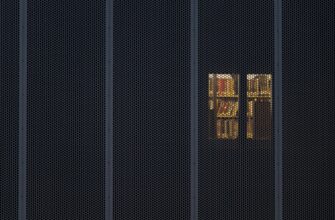What is Crypto RC4? The Stream Cipher Explained
RC4 (Rivest Cipher 4) is a symmetric stream cipher algorithm created by Ron Rivest in 1987. Designed for fast software implementation, it became one of the most widely used encryption protocols for securing web traffic (SSL/TLS), wireless networks (WEP), and file encryption. Unlike block ciphers that encrypt fixed data chunks, RC4 generates a pseudorandom keystream that’s XORed with plaintext data bit-by-bit. Its simplicity allowed efficient encryption on low-power devices, contributing to its 1990s-2000s dominance despite never being officially standardized.
How RC4 Encryption Works: Technical Mechanics
RC4 operates through two phases: Key Scheduling and Pseudorandom Generation. Here’s the step-by-step process:
- Key Initialization: A secret key (typically 40-2048 bits) initializes a 256-byte state array (S-box) through key-scheduling algorithm (KSA).
- S-Box Scrambling: The KSA permutes S-box values using modular addition with the secret key.
- Keystream Generation: The pseudorandom generation algorithm (PRGA) produces keystream bytes by:
- Swapping S-box entries based on indices
- Calculating a keystream byte via S-box lookups
- Encryption/Decryption: Each plaintext byte is XORed with a keystream byte to produce ciphertext (reversed for decryption).
Historical Applications: Where RC4 Was Used
RC4’s speed made it the backbone of early internet security:
- Secure Sockets Layer (SSL)/TLS: Protected HTTPS connections until vulnerabilities forced deprecation
- Wired Equivalent Privacy (WEP): Default security for early Wi-Fi networks (now obsolete)
- Microsoft Office & PDF Encryption: Secured documents in legacy software versions
- Remote Desktop Protocols: Enabled encrypted remote access sessions
Critical Vulnerabilities: Why RC4 is Considered Broken
Despite initial trust, cryptographic research exposed fatal flaws:
- Biased Output: Early keystream bytes show statistical biases, leaking key information
- Fluhrer-Mantin-Shamir (FMS) Attack: Recovers WEP keys by analyzing weak initialization vectors
- RC4 NOMORE Attack: Decrypts HTTPS cookies in ~75 hours using repeated plaintexts
- No Authentication: Susceptible to bit-flipping attacks without message integrity checks
By 2015, the IETF prohibited RC4 in TLS, and NIST deprecated it entirely by 2022.
Modern Alternatives to Replace RC4 Encryption
Current standards prioritize authenticated encryption with associated data (AEAD):
- AES-GCM: Galois/Counter Mode combines AES encryption with integrity protection
- ChaCha20-Poly1305: Google-developed stream cipher with authentication, optimized for mobile devices
- AES-CCM: Counter with CBC-MAC for wireless/IoT security
- SPECK/Simon: Lightweight ciphers for embedded systems (where AES is impractical)
Frequently Asked Questions (FAQ)
Q: Is RC4 still safe to use today?
A: No. All major standards bodies consider RC4 cryptographically broken. Avoid it for any security-sensitive applications.
Q: Can RC4 be cracked easily?
A: Yes. Attacks can recover keys with as few as 1 million encrypted packets (for WEP) or decrypt web sessions in hours. Cloud computing makes attacks even faster.
Q: Why was RC4 popular despite vulnerabilities?
A: Its algorithm was 3x faster than AES in software during the 1990s, required minimal resources, and was freely implementable without patents.
Q: What’s the difference between RC4 and AES?
A: RC4 is a stream cipher; AES is a block cipher. AES uses fixed 128-bit blocks with multiple rounds of substitution/permutation, while RC4 generates a continuous keystream. AES offers proven security with modern modes like GCM.
Q: Are there any valid uses for RC4 today?
A: Only in legacy systems undergoing migration or non-security contexts (e.g., generating pseudorandom numbers for simulations). Never use it for data protection.






